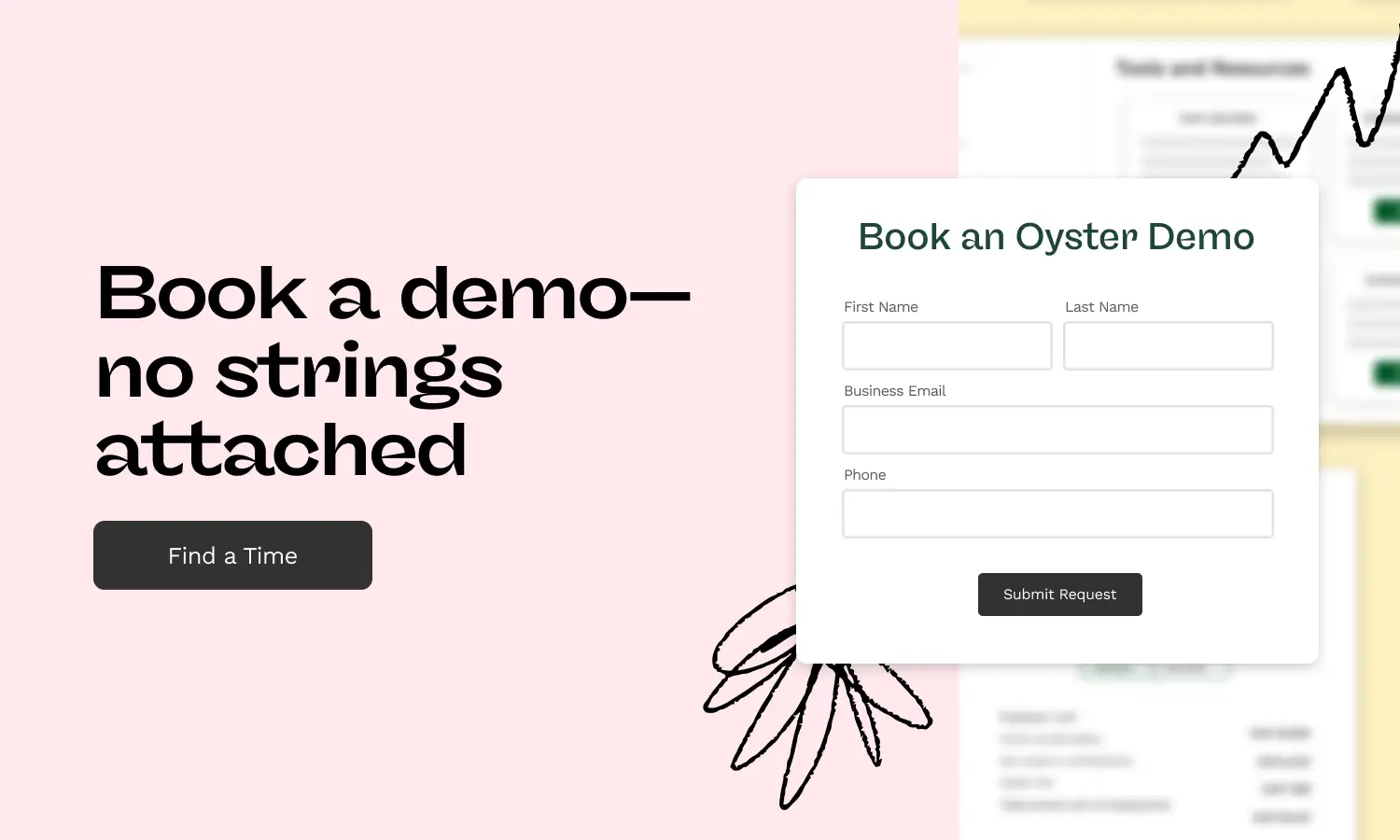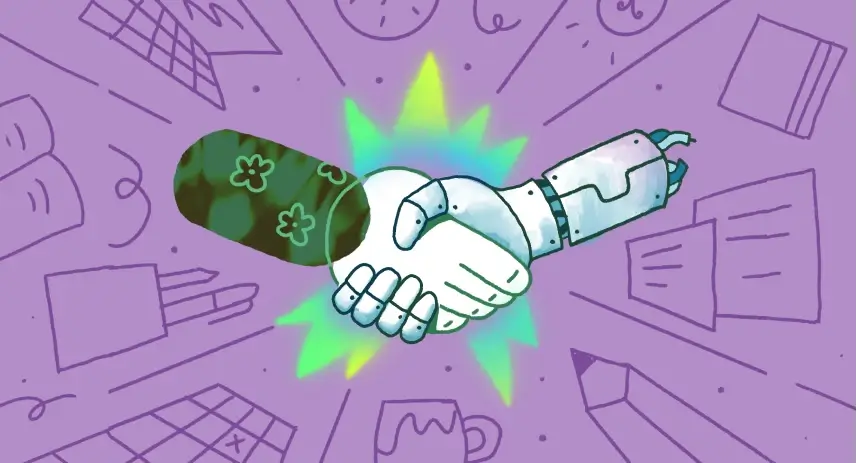The CEO announces the company’s bold new AI vision. Underneath the applause, there’s an undercurrent of unease. In private, employees wonder: Will my job change? Will I keep up?
With or without an announcement, the reality: AI is here. It’s in our tools, workflows, team meetings, and increasingly, in the expectations that execs have for efficiency, speed, and innovation.
While the vision may be clear from the top, most teams are still working through the complexities of change and unable to experience AI’s full potential. In fact, some even report that it’s “tearing the company apart.” Employees are cautious about tech overload, opaque tools, and layoffs linked to AI and automation. It’s important to proceed thoughtfully and intentionally so as to reap the benefits but without causing major disruption or chaos.
This is where HR plays a critical role because AI adoption depends on trust, clear communication, and effective change management. HR teams are doing more than supporting this shift—they’re shaping it. With the right tools and mindset, HR can turn uncertainty into confidence and friction into alignment.
In this article, we unpack what HR leaders need to know to lead successful AI integration, from common friction points to proven strategies that drive alignment and buy-in across the organization.
Where friction emerges
Automating repetitive tasks, accelerating innovation, boosting productivity—this is the promise of AI. For individuals, AI adoption has been quite prevalent. In the past two years, AI use at work has nearly doubled. However, data shows that organizational adoption and rollout hasn’t been as successful.
- There’s misalignment between execs and employees: According to this 2025 Writer study, 42% of leaders say that AI adoption has led to tension and division and is tearing the company apart.
- There’s a general fear of being replaced: Many workers are familiar with AI, but they’re resistant to using it openly in the workplace. In this 2024 Microsoft x LinkedIn report, 53% of employees said they hid their AI use from employers for fear that it would make them look replaceable.
- Each generation has a different relationship with AI: 40% of tech workers aged 18-24 use AI at least weekly on the job, but are also more likely to fear what it means for their careers and actively sabotage AI initiatives. Meanwhile, nearly half of professionals 55 years or older don’t use AI technology at all.
- AI can create motivation slumps: AI can help with productivity, but it can also sap motivation when tasks become too automated or impersonal. According to Harvard Business Research, intrinsic motivation dropped by an average of 11% and boredom increased by an average of 20%.
It’s tempting to think of AI resistance as a tech problem or a training issue. But what we’re really seeing is a human response to rapid change.
So, if your organization wants to adopt AI, the question is how to do it well. And that’s where HR has a defining role to play.
From tension to traction: HR’s role
As the friction points above demonstrate, integrating AI into the workplace isn’t just about introducing new tools, it’s about shifting mindsets. A key component of that? Building trust.
HR leaders have the power to build trust and shift mindsets through their messaging and communication strategies, learning cultures, change management, and more. To help you get started, here are five vetted strategies.
Oyster experts share 5 vetted strategies
1. Position AI as a problem solver
AI can be an intimidating concept. We’re told it will transform our tech stacks and the way we work. But what most employees are hearing is change. And change means learning new things and navigating complexities.
So, instead of leading with all the possibilities of AI, narrow in on specific problems or use cases it can solve. When AI is framed as a tool that will improve real workflows that exist today—not some theoretical situation tomorrow—they’ll be more open to trying it out.
Also keep in mind that not every workflow needs AI. Some teams may benefit more from process refinement than automation. By identifying and communicating the most relevant use cases for different teams, you can help avoid feelings of overwhelm.
So, to get started, ask teams:
- What tasks are draining your time?
- What do you wish you could automate?
- What tasks are most prone to error?
2. Personalize the rollout
Everyone’s relationship with AI is different. Different teams, roles, and individuals all have different needs and comfort levels. Personalizing your rollout may sound like a big lift, but there are ways to tailor your approach without having 1:1s with every team member. Here are some ideas shared by our experts:
- Start with champions from across the org: Gather champions across various departments, not just technical teams, to help you experiment with tools, find issues, and create examples or use cases.
- Tailor your messaging: You don’t need to convince each individual personally, but framing AI’s benefits or outputs in terms of what matters to each department will make your message more relevant and engaging.
- Recognize different starting lines: Some employees are already using AI tools regularly, while others have limited experience—or none at all. To avoid leaving anyone behind, make sure your enablement efforts account for a range of comfort levels.
3. Create safe learning spaces
Fear is one of the biggest blockers to adoption. With the AI industry moving a mile a minute, many employees worry about looking outdated or making mistakes.
Here are ways to remove the pressure:
- Normalize experimentation when budget allows: Acknowledge that some AI implementations might not work as expected, and that's part of the learning process, not a failure. Some teams may also benefit from sandbox environments, where people can play with tools without affecting real work.
- Provide hands-on learning: Many employees learn by doing. Create workbooks or interactive experiences where people can learn while using the tool, rather than passive training, like static slide decks.
- Share starter prompts: Provide example prompts people can copy, tweak, and learn from without starting from scratch. This helps people understand how to effectively use the tool.
4. Focus on communication, not just training
Most AI rollouts focus heavily on how to use the tool. But communication around why it matters is equally critical, particularly for reducing anxiety and building trust. You should also be realistic about the challenges and limitations of existing tools.
Here are three tips for building your playbook:
- Present AI adoption as part of ongoing improvement rather than fixing something that’s broken. AI should be viewed as a solution for evolving and growing—not correcting—the team.
- Celebrate early wins, like improved document readability or translation capabilities. Highlighting small, but meaningful, successes will help demonstrate immediate value.
- Create open feedback channels to make clear that AI implementation is collaborative and employee input is valued. Encourage team members to ask questions, share concerns, and suggest improvements. Consider using an anonymous survey to increase participation.
5. Refer to key change management principles
AI adoption is a change management challenge at its core. And the principles we’ve always used as HR leaders—clarity, trust, incremental progress—still apply.
So, remember:
- Don’t oversell the destination: With AI evolving so quickly, long-term roadmaps can feel abstract or outdated. Instead, help people understand what’s happening now and what they can try next. Focus on the next step and acknowledge where AI has limitations.
- Normalize the learning curve: Make it okay to say, “I don’t know how this works yet.” Encourage teams to share what they’re learning, even what isn’t working. That transparency builds confidence.
- Trust builds over time: This isn’t a one-and-done change. Trust builds as employees see that their feedback is heard and their jobs are enhanced, rather than threatened.
Final thoughts
The AI landscape is evolving at an incredible pace, making it difficult for organizations and employees to keep up—let alone unlock its full potential.
While many teams are still finding their footing, HR leaders have a unique opportunity to guide the transition and reshape how AI is introduced and adopted across the organization. They can also guide conversations around ethical considerations, using organizational values as a lens through which AI use cases should be evaluated. By stepping in early, HR can help shape AI adoption into a strategic advantage rather than a source of disruption.
This article belongs to a three-part series on AI in HR. Next up: learn how AI is changing the interview process and how AI is impacting Gen Z’s career trajectories.

About Oyster
Oyster is a global employment platform designed to enable visionary HR leaders to find, engage, pay, manage, develop, and take care of a thriving distributed workforce. Oyster lets growing companies give valued international team members the experience they deserve, without the usual headaches and expense.
Oyster enables hiring anywhere in the world—with reliable, compliant payroll, and great local benefits and perks.

















